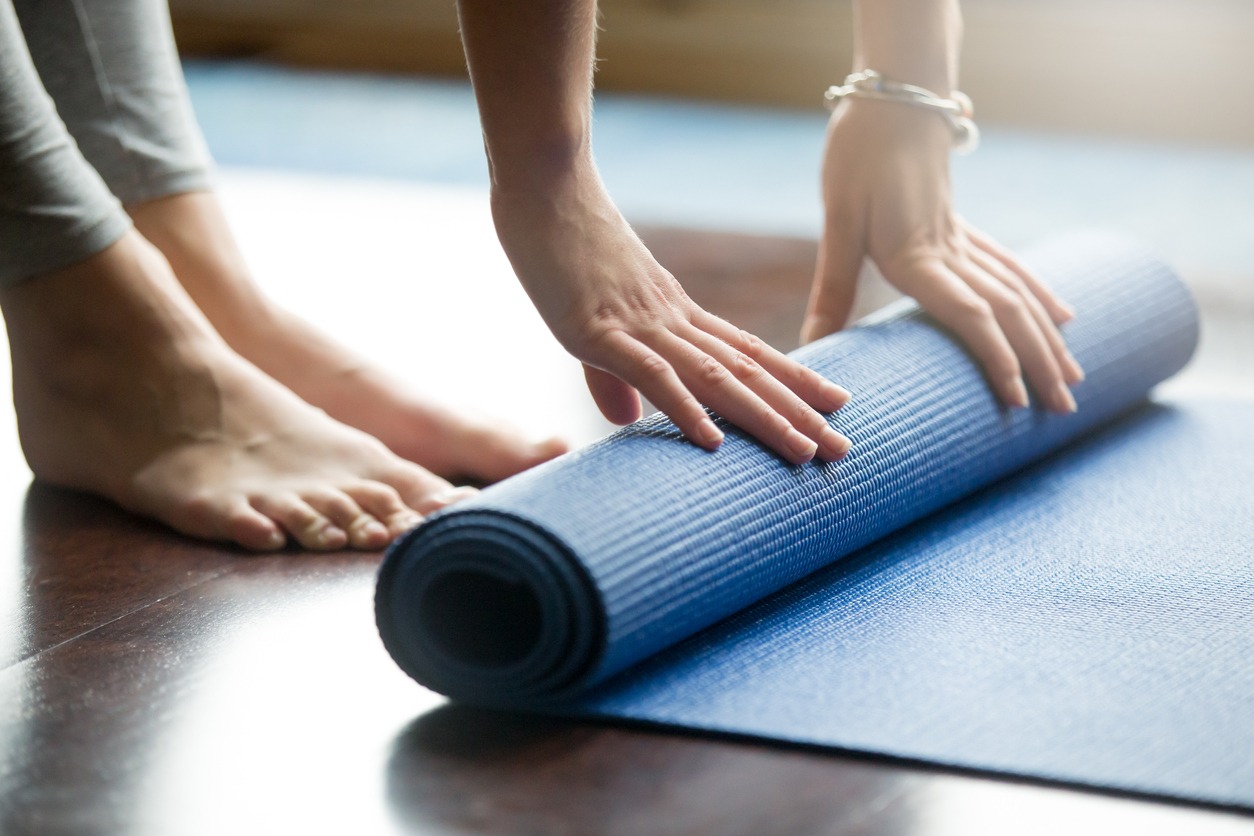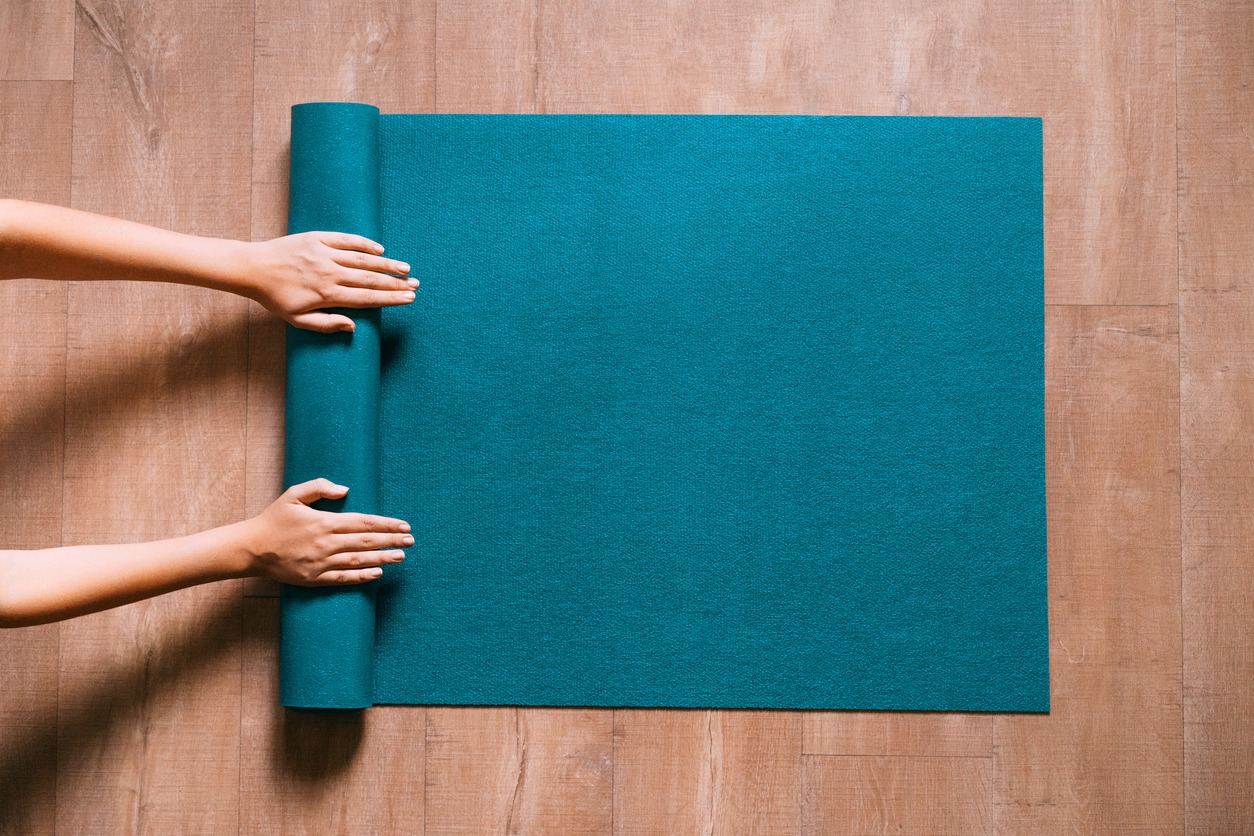Choosing the proper thickness for your gym mats is more than simply a personal preference; it’s an important choice that will immediately influence your exercise comfort, safety, and performance. Gym mats, integral to any fitness regimen, are the foundational layer that cushions your body, supports your joints and protects the floor beneath.
Gym mats should be at least 8mm thick. There is a lot of confusion in choosing the right mat to carry out your physical activities inside your home. However, we can take some precautions, allowing us to make the best choice. Whether you’re unrolling a mat for a serene yoga session, setting up a high-intensity interval training area, or positioning equipment for weightlifting, the thickness of your gym mat can significantly influence the effectiveness of your exercise and overall workout experience.
This introduction aims to highlight the importance of carefully considering gym mat thickness and guide readers through the subsequent sections, where we’ll explore how different exercises demand specific types of support, the role of material and floor surface in determining the ideal thickness, and tips for selecting the perfect mat for your fitness journey.
Factors Influencing Mat Thickness
Several key factors are pivotal in determining the optimal thickness for gym mats, each influencing the balance between comfort, stability, and protection during exercise. Individuals can make well-informed selections based on these characteristics, which are particular to their training requirements:
- Type of Exercise: The nature of the activities significantly affects the ideal mat thickness. High-impact exercises like jump squats or burpees require thicker mats for enhanced cushioning and joint protection. Conversely, activities focusing on balance and stability, like yoga or Pilates, are better served by thinner mats, allowing a firmer connection with the floor.
- User Comfort and Preference: Personal comfort levels and physical conditions, such as joint sensitivity or back issues, dictate the need for more or less cushioning. Some prefer a softer surface for added comfort, while others prioritize a firmer mat for better balance.
- Floor Surface: The hardness of the underlying floor is a critical consideration. Working out on a concrete surface might necessitate a thicker mat for adequate protection, whereas a carpeted or softer floor may allow for a thinner mat.
- Slip Resistance: Mat thickness can also influence slip resistance. Thicker mats made of soft foam might compress too much underfoot, potentially leading to instability during dynamic movements. In contrast, thinner, denser mats often provide a more stable base but may offer less cushioning.
By carefully considering these factors, users can select a gym mat that supports their physical activities and enhances their overall exercise experience, ensuring safety, comfort, and optimally balanced performance.
Material Considerations
The material from which a gym mat is made significantly impacts its durability, comfort, texture, and even the appropriate thickness for various workouts. When selecting a gym mat, it’s crucial to understand the properties of different materials to find one that suits your exercise routine and preferences:
- Rubber: Highly durable and resistant to wear, rubber mats are ideal for heavy-duty exercises like weightlifting. They provide excellent traction and shock absorption, making them suitable for high-impact workouts. Rubber mats can be relatively thick, offering substantial cushioning and protecting the floor beneath.
- Foam: Foam mats are lightweight and offer excellent cushioning, making them perfect for yoga, Pilates, and low-impact exercises. They come in various thicknesses, with thicker options providing more cushioning for joints and thinner ones offering more stability for balance-focused activities.
- PVC (Polyvinyl Chloride): PVC mats are versatile, easy to clean, and balance cushioning and stability. They are suitable for various activities, including aerobic exercises and yoga. PVC mats can vary in thickness to accommodate different exercise types, offering a middle ground between foam and rubber in terms of cushioning and durability.
- TPE (Thermoplastic Elastomer): TPE mats are an eco-friendly alternative, offering rubber and plastic benefits. They are generally lightweight, non-slip, and provide moderate cushioning, making them suitable for general fitness activities. TPE mats are in various thicknesses to suit personal preferences and workout needs.
Each material brings unique benefits and considerations, influencing the mat’s performance, lifespan, and suitability for different exercises. By evaluating the material’s characteristics alongside the intended use and personal preferences, individuals can choose a gym mat that best aligns with their fitness goals and requirements.
Is EVA foam good for the gym floor?
Yes, Eva foam is good for a gym floor. Each tile is 1 cm thick and is made of double-sheet A free EVA foam, which is soft enough for stretching or yoga and durable enough for aerobic activity.
Its lightweight nature makes EVA mats easy to roll up and store, offering convenience for home gyms and professional fitness centers. Additionally, EVA foam’s closed-cell structure means it’s water-resistant and easy to clean, helping to maintain hygiene and prolong the mat’s life.
However, some users have found that the tiles separate at the joints when doing high-intensity exercises. Some then have the signs of the burdens, while others say they leave after a while. Indeed, someone complained that the tiles were of different blacks.
Ergonomic Considerations
For activities where you’ll be standing for long periods, such as weightlifting or certain types of fitness classes, consider using mats with ergonomic features. These mats often have textures or patterns designed to reduce fatigue and may vary in thickness to provide optimal support.
Floor Protection and Noise Reduction
If your primary concern is protecting the floor underneath or reducing noise, especially in a home gym situated in a multi-level building, opt for mats that are at least 3/4 inch to 1 inch thick. These can effectively absorb the impact of dropped weights and dampen the sound of exercise equipment.
Consulting Professionals
If you’re unsure about the best mat thickness for your needs, consider consulting a fitness professional or a physical therapist, especially if you have pre-existing conditions or injuries. They can offer personalized advice based on your physical requirements and the activities you’re engaging in.
Frequently Asked Questions (FAQs)
In the final section of our discussion on gym mat thickness, we address a collection of Frequently Asked Questions (FAQs) that readers often ponder when selecting the perfect mat for their fitness needs. This section aims to clarify common uncertainties, providing straightforward answers to help everyone from beginners to seasoned athletes make informed decisions:
What thickness of the gym mat is best for yoga?
- For yoga, a mat thickness of around 1/8 inch (3 mm) to 1/4 inch (6 mm) is ideal, offering a good balance between cushioning for joint comfort and firmness for stability in poses.
Is a thicker gym mat better for high-impact exercises?
- Yes, thicker mats (around 1/2 inch to 3/4 inch) provide better cushioning and protection for the user and the floor for high-impact exercises or weight training.
Can the same mat thickness be used for all types of workouts?
- While a medium thickness (around 3/8 inch) can be versatile, specific workouts benefit from tailored thicknesses for optimal performance and safety.
How do I choose between different mat materials?
- Consider the type of exercise, desired durability, maintenance needs, and personal comfort preferences. Rubber and EVA foam are great for high-impact and versatile use, while PVC and TPE suit low-impact exercises and easy maintenance.
How important is slip resistance in a gym mat?
- Very important, especially for dynamic or balance-focused exercises. Look for mats with textured surfaces or high-grip materials to ensure stability during workouts.
Can I use multiple mats for added thickness?
- Yes, layering mats is an option for added cushioning, but ensure they don’t slide apart during use. Some prefer a single thicker mat for simplicity and safety.
Is it okay to work out on a carpet?
- Yes, it’s ok to work out on carpet. In this case, much will depend on the product’s destined use and, therefore, on the type of exercises that will be supported. It can be beneficial to opt for large products, such as the appropriate workout carpet, to facilitate the positions to be adopted.
What is the best flooring for the garage gym?
- If choosing between rolled and rubber flooring, rubber flooring is the best for the garage gym. Rubber flooring is an excellent choice if we discuss heavy loads that will be dropped on the ground daily. The installation of the rubberized flooring is straightforward, and you can comfortably do it yourself.
By addressing these FAQs, we hope to demystify choosing the right gym mat thickness, making it easier for individuals to select a mat that enhances their workout experience, supports their fitness goals, and ensures their safety and comfort.
Conclusion
In conclusion, selecting gym mat thickness is a critical factor that can significantly enhance your workout experience, offering the right balance of cushioning, stability, and safety required for various types of exercises. From the supportive embrace needed for yoga and Pilates to the robust cushioning demanded by high-impact activities and weightlifting, understanding the nuanced interplay between mat thickness, material, and the nature of your workout routine is essential. Factors such as the type of exercise, user comfort and preference, the underlying floor surface, and material considerations are pivotal in determining the ideal gym mat for your fitness journey.
Armed with this guide’s insights, you’re better equipped to choose a gym mat that suits your specific workout needs and enhances your overall exercise effectiveness and enjoyment. Remember, the right gym mat invests in your health, safety, and fitness goals, ensuring that the optimal foundation supports every step, jump, or pose.


